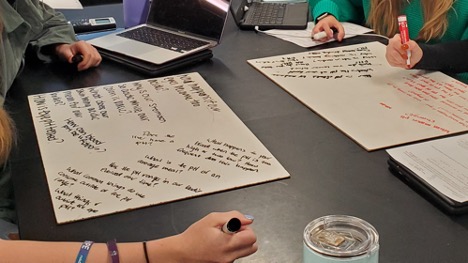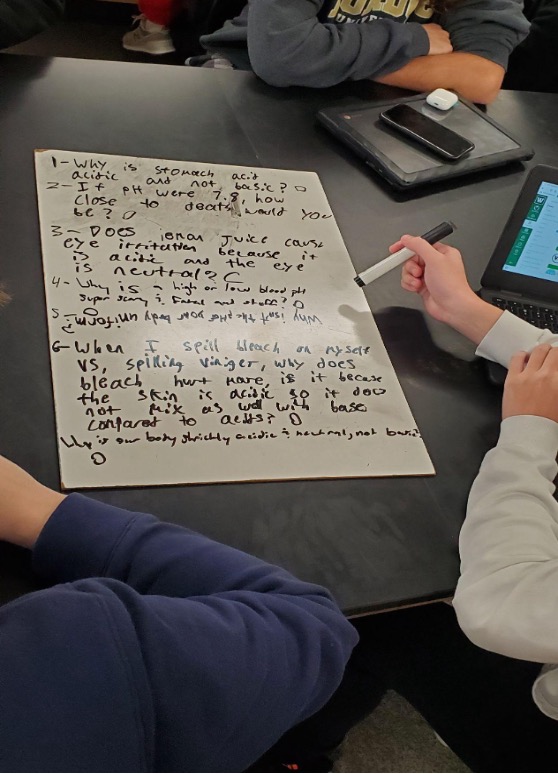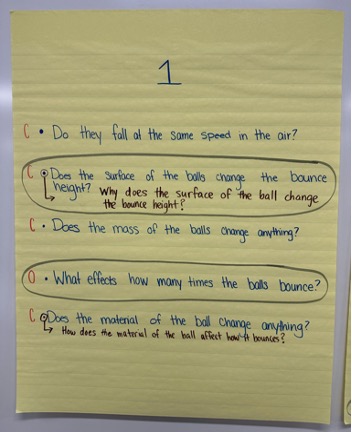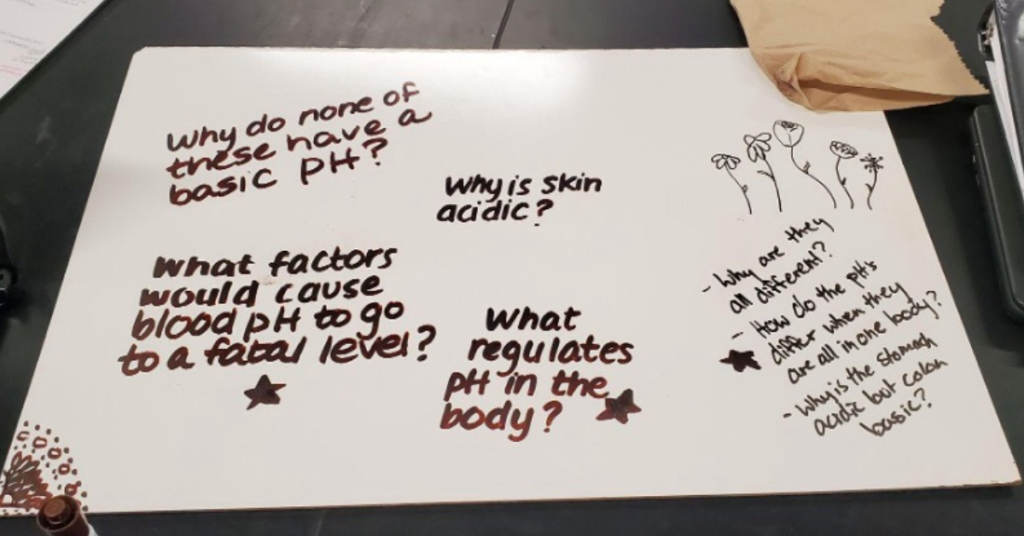Written by Maureen McGail, AP-TIP Science Content Director, University of Notre Dame; Melissa Burger, AP-TIP Science Support Specialist AP Environmental Science, Greenwood Community High School; Jacob Bowman, AP-TIP Science Support Specialist AP Physics, Norwell High School; Kevin Morse, AP-TIP Science Support Specialist AP Chemistry, Westfield High School; and Kristi Phillippe, AP-TIP Science Support Specialist AP Biology, Marion High School
“There’s no such thing as a bad question.”

We hear this over and over during our lives, and we repeat it in hopes of sparking engagement and curiosity. It’s true that there are no bad questions, but there are better questions for the situation or for what you’re trying to find out.
How can we foster inquiry and teach our students to ask better questions and also seek the best answers? The Question Formulation Technique (QFT), a research-based instructional strategy developed by the Right Question Institute, does just that. It focuses on improving one’s ability to articulate thoughts, ask the best question and seek out the right answers.
One thing that sets the QFT apart from other instructional strategies is its simplicity. QFT empowers students to generate questions based on a teacher-designed Question Focus (QFocus) using just four straightforward rules:
- Ask as many questions as you can
- Do not stop to answer, judge or discuss
- Write down every question exactly as stated
- Change any statements into questions
This accessible format grants all students the confidence to actively participate and have their voices heard. This strategy is approachable for new and experienced teachers.

A critical attribute of using QFT in different ways is developing a QFocus, which will lead students to ask questions that will guide the learning or application of content. Using a basic template, educators can quickly create lessons to encourage students to formulate questions about content in their curricula. Teachers can also easily gauge interest by reviewing questions at the beginning of a unit to tailor lesson plans to suit the needs and curiosities of their students.
This approach is not exclusively about asking questions. It’s about cultivating a mindset of inquiry and ownership of learning.
The QFT helps students move away from passively receiving information to actively engaging to develop the critical thinking skills they need. This process allows for students to engage in metacognition and reflect on the importance of asking good questions. The skills developed using the QFT are invaluable as students grow into lifelong learners.
The QFT strategy can be used in multiple ways to improve student engagement and understanding. It can be used to introduce a new concept, review a unit, develop a question to investigate or focus thinking to allow students to dig deeper into an application of an idea.
Using QFT to introduce a concept builds framework, activates prior knowledge, increases student investment and involves all students. QFT allows for organic student-led investigations by having the students develop questions centered around a phenomenon, which can lead to further discovery through experimentation. When examining data, QFT has students look deeply at the numbers and graphs to ask questions before drawing conclusions or making explanations.
In our experience, all students struggle to create their own questions due to a lack of practice. This highlights the importance of the technique. Writing good questions is challenging, but students improve each time they try.

We have learned that the QFT is a critical strategy because it involves all students each doing their own thinking and generating their own questions.
While success with the QFT takes time and practice, the process only needs to be taught once for it to become natural for students. The QFT process engages students and makes them more connected to learning, allowing for more student-led classroom experiences. This process teaches students to ask their own questions, even outside your classroom and the formal QFT process.
We are confident that you and your students will see the value of QFT. Challenge yourself to try QFT in any subject!
If you are looking for more QFT information, watch the AP-TIP QFT Video Series, read the RQI article, check out RQI resources or maybe lead a QFT book study. You’ll find that QFT is a deceptively simple yet important practice that will encourage curiosity, spark inquiry and result in students taking ownership for their learning.
